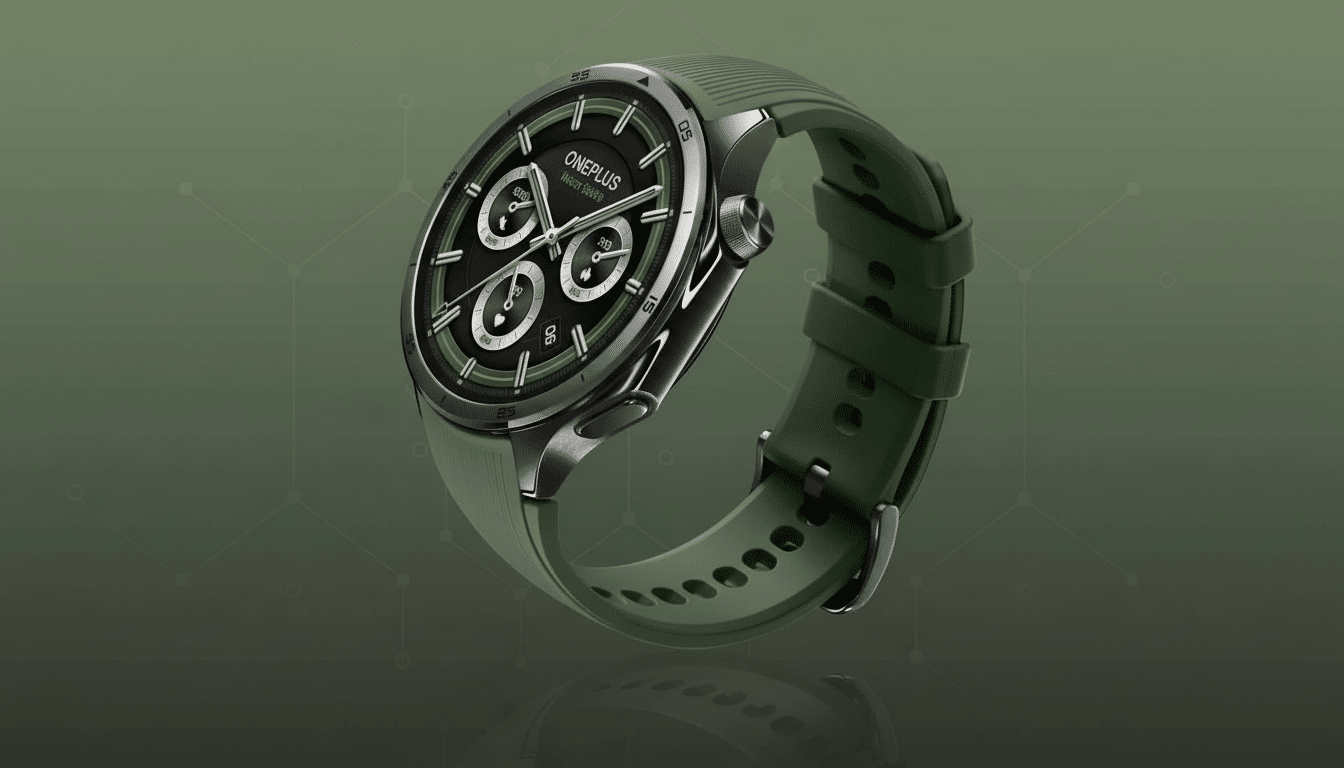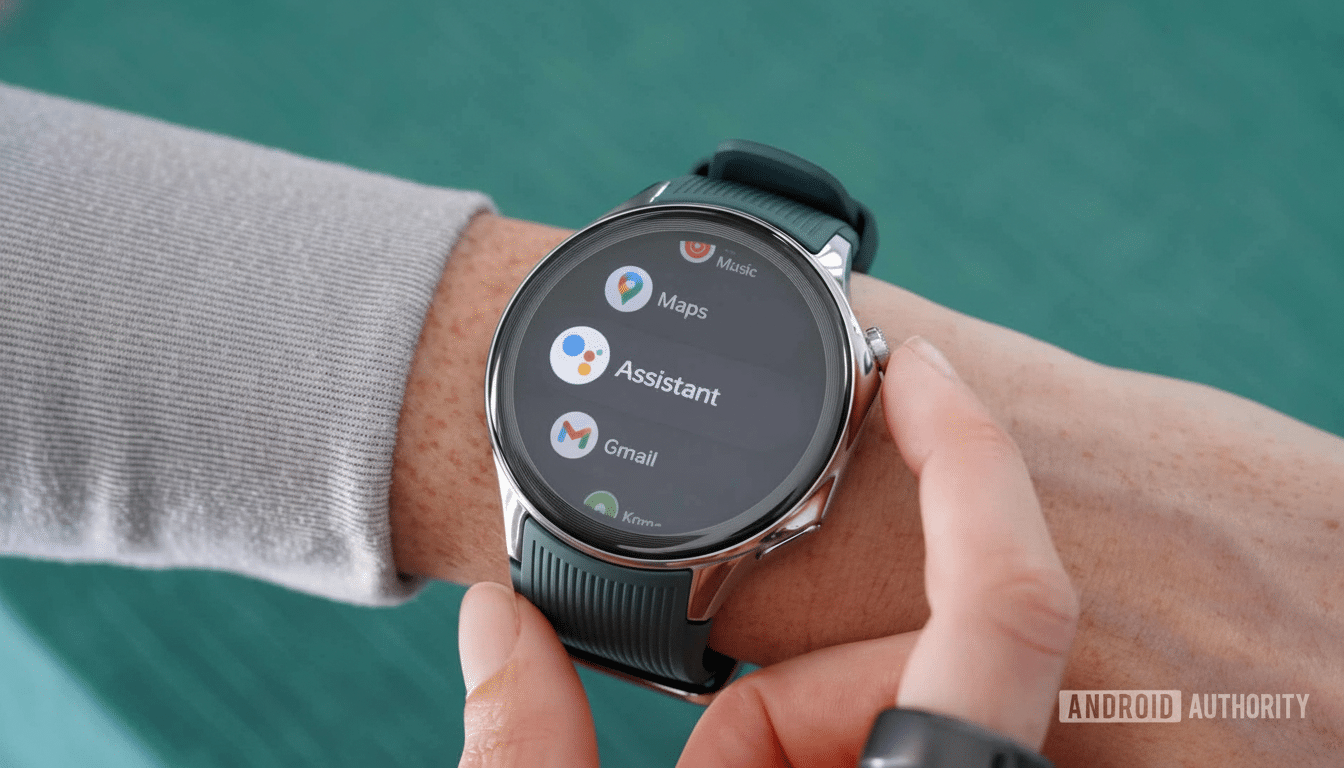OnePlus missed its self-imposed window to get Wear OS 5 onto the OnePlus Watch 2 and Watch 2R, and the slip is now causing concern among those early adopters of the new OnePlus Watch 3. With Wear OS 6 already on Google’s Pixel Watch lineup and Samsung’s newest rash of Galaxy Watches, OnePlus is now a full platform version behind on one of its most beloved wearables and no longer possesses a complete plan for it. The Watch 2 was launched with a two-engine design that combined the Snapdragon W5 Gen 1 with a BES2700 co-processor to keep the lights on as it juggled Wear OS and a companion RTOS. In actual use, the design has acquired impressive encomia for endurance, but it has also raised a slew of engineering perils when major revisions to the OS are released.
The company had committed to a Wear OS 5 deployment this quarter, but that deadline has now passed without a timetable being made public. At the time of its release, OnePlus framed the Watch 2 as a long-term investment with software support that included quarterly security repairs; several Watch 2 users note that a substantial proportion of the devices remain on a security patch dated May 2025, making those assurances moot. Alternatively, a statement was made in an interview with the tech press, notably Android Central, just before the watch was released, saying that the Watch 2 will get the boot in 30 days.

Hardware parity makes the delay hard to justify
The discrepancy is all the more remarkable in light of the OnePlus Watch 3 shipping with Wear OS 5 and relying on the same fundamental silicon approach as Watch 2 and 2R. If much of the work required for Wear OS 5 integration is already available in-house, why are last year’s device and something so similar as the 2R left in limbo? Short of a formal postmortem, we can only speculate on certification delays, on-device Google compatibility testing, or unexpected battery regression issues that can arise with significant platform shifts.
It is a mixed blessing of the dual-chip arrangement that set the Watch 2 apart. The RTOS side juggles low-power responsibilities, taking some of the work out of the Snapdragon W5 Gen 1 in order to improve endurance to multiple days on a charge. Nonetheless, updating Wear OS implies re-certifying the entire execution route: new system services, sensor schedules, and handovers across the chips must be adjusted, so health tracking and updates stay useful in power-saving modes. That is a lot of complexity, but it is far from an unusual situation. Throughout the competing devices, Qualcomm’s W5 Gen 1 platform has provisioned Wear OS 5.0, while Google has used modularized services to limit the scope of overwhelming updates. In other words, the business has a consistent plan.
When OnePlus introduces Wear OS 5 to the Watch 3 but declines to update the Watch 2 or 2R, it is a sign of value judgment rather than a technical one-upmanship.
Implications for Watch 3 and the move to Wear OS 6
Wear OS 6 made its debut mid-year, accompanied by the new Pixel and Galaxy wearables, with performance tuning, refined health APIs, and deeper background restrictions for battery conservation. If your Watch 2 is still awaiting Wear OS 5, Watch 3 owners have every right to question how soon their device will climb to Wear OS 6. A one-generation delay may rapidly spiral into a two-gen perception issue, particularly in a category where feature parity and protection appraisal are crucial:

Counterpoint Research experts and IDC researchers have frequently demonstrated to Computerworld how software longevity and timely updates motivate consumers’ premium wearable buying. With Apple’s day-one watchOS pumping the maximum standards, Google’s and Samsung’s most recent wearables are humming along on that regular. Slackened schedules might quickly erode shareholders’ goodwill, gains made with the Watch 2’s long battery life and top-grade fitness tracker.
How the software features were promoted is the following:
- OnePlus needs to rapidly improve transparency. Publishing a roadmap with staggered markers—beta windows, area rollouts, and clear model eligibility—would assist in restoring trust. Short of dramatic results, temporarily detaching OS updates from major security enhancements will help remind the market that their system design does not define security.
- Use the Watch 2/2R and Watch 3’s dual hardware arrangement to stay in harmony, even when the whole Wear OS version takes a lot of time. Even while working on various models, Google Play system development patches and solution enhancements can still be integrated to maintain connectivity.
Finally, the company could tender tangible goodwill gestures if future delays seem likely: extended warranty coverage for software-impaired issues, trade-in bonuses for Watch 2 owners who upgrade to Watch 3, or early-access beta channels for hardcore users willing to give feedback on developer builds.
Bottom line: OnePlus must deliver on overdue updates
The OnePlus Watch 2’s delayed Wear OS 5 update missed its scheduled pit stop. It’s a product of the brand’s commitment to software and a critical step forward in the evolution of the OnePlus wearable. The reality today is competitors are on Wear OS 6. The way ahead is clear communication, consistent security patches, and a trustworthy timeline for updates to both Watch 2 and Watch 3. The firm has demonstrated that it is capable of resolving the issue of time. Now it must deliver an update.

